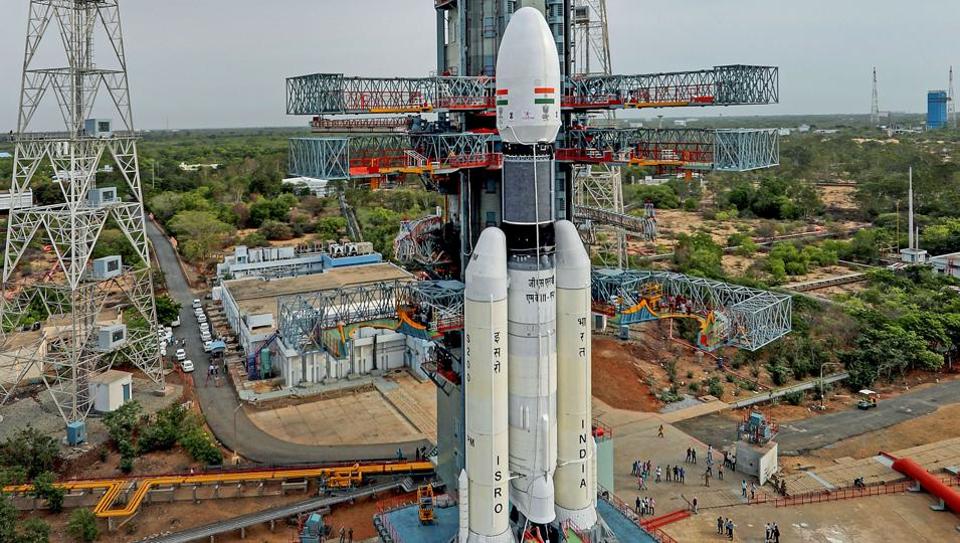India’s Mission Moon Is No Mean Feat

India’s first-ever soft landing on the moon, which was to yield the “Kennedy moment” for us, did create another unforgettable image in the shape of Prime Minister Narendra Modi consoling ISRO chief who broke down when Chandrayaan-2 lander did not land as planned and stopped communicating.
It was a shocker for millions glued to TV sets much past midnight, a rude reminder that it was a scientific exploration and not a tele serial they were witnessing.
In 1957, when USA launched its first satellite into orbit, two seconds after leaving the launch pad at Cape Canevral, the rocket lost thrust and sank back down, rupturing and exploding its fuel tanks. For India too, this is the first time we were attempting a soft landing.
India as a nation has developed scientifically to a level where we can build and send a totally indigenous unmanned spacecraft to the Moon on our own is a feat and that too at a cost of Rs.978 crore – much less than the cost of a Hollywood blockbuster.
Soft landing is obviously a difficult procedure because you have to give sufficient thrust against the gravitational pull of the Moon to be able to land softly without crashing the spacecraft into it.
Perfect synchronization and control are required at the time of landing to be successful. There is no second chance.
The Lunar surface is the same – very hostile with extreme surface temperature and vacuum.
The maneuvering of the aircraft had to be precise to ensure that it does not deviate from its path, particularly when we are talking in terms of lakhs of kilometers away from the earth (distance between moon and earth is around 3.844 lakh kilometers).
Solar radiation pressure and the gravitational pull from other astronomical bodies on the spacecraft would require high degree of skilled handling and scientific acumen to keep it on path.
Lunar dust could stick to surfaces and cause disruption in deployment mechanisms, performance of solar panel and sensors.
Communication of radio signals is again another area of concern in view of the long distance and background noise. Landing at any wrong place may lead to a total communication blackout.
If successful, India would have been the fourth country in the world to have landed a spacecraft on the moon after USA, Russia, China, and first to have soft landed on Lunar South Pole with invaluable deposits of water ice.
But this was not to be. While millions, including the Prime Minister watched the landing at ISRO Telemetry, Tracking and Command Network (ISTRAC), Vikram the Lander suddenly went silent and stopped communicating to the ground station just when it was 2.1 kilometers above the surface of the moon. It is now known have landed in one piece but is supposed to be tilted from thermal photographs sent by the Orbiter.
Chandrayaan-2 Orbiter will circle and study the Moon remotely for a year, safely from the lunar orbit.
With only 60 percent success rate in lunar missions, India has to learn to accept failure and success in the right spirit.
China launched a modified Long March 3B rocket, with Chang’e 3 Moon Lander and its Rover Yutu on-board towards the Moon and successfully performed a soft landing on December 14, 2013 and rover operations, becoming the third country to do so after US and Russia.
The latest mission, the Chang’e 4 Lander, reached the far side of the Moon in 2018. The Yutu 2 Rover was then deployed to explore the South Pole-Aitken Basin. The Lander also carries an experiment known as the Lunar Micro Ecosystem (LME), a metal cylinder containing seeds and insect eggs designed to test the effects of lunar gravity on living creatures.
India expects to send Vyomnauts (as India plans to call its astronauts) to space in the Gaganyaan capsule by 2022 on a home-grown GSLV-III rocket.
Over 70 countries claim to have some or the other form of space programme today.
India, under the visionary leadership of Dr Vikram Sarabhai and Dr Homi Bhabha, very quickly established a firm foundation for its space programme in the 1950s-60s.
At the time soon after Independence, when the country was reeling under the challenges of economic and social development, to be able have confidence, foresight to develop an ambitious space programme despite the immediate needs of the country and see that adequate resources are allocated for it, required strong and wise scientifically inclined political leadership.
Whether it was Jawaharlal Nehru, Indira Gandhi, Atal Bihari Vajpayee or Narendra Modi, India has been fortunate to have Prime Ministers who have always supported development in the area of both Space and Atomic Energy understanding their strategic importance for the country, both for its defence and peaceful use.
(The writer is a senior journalist based in New Delhi)

Comments are closed.